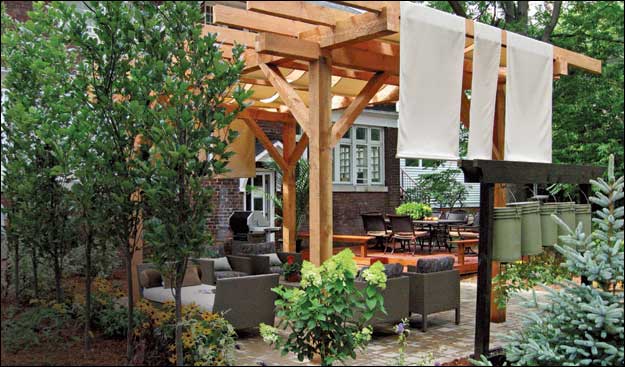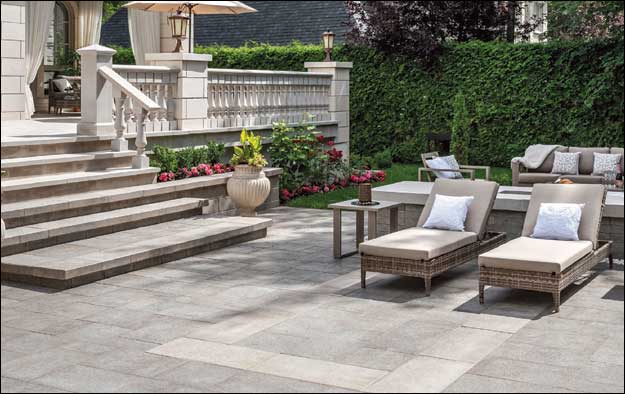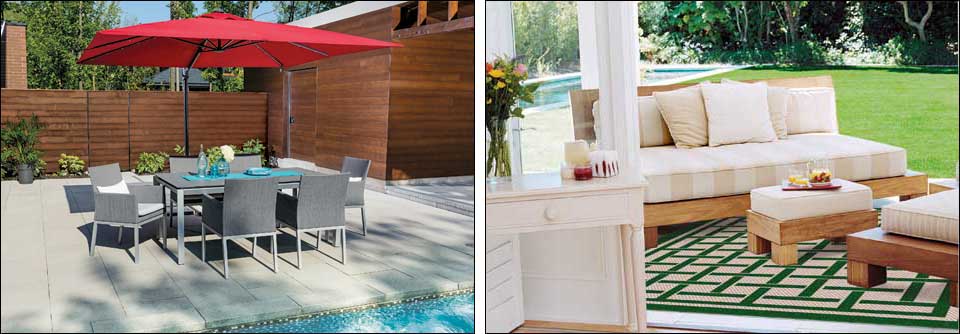
Regina Gadacz
Hot town summer in the city
Renovation ContractorBuilt-up urban areas trap heat. Help your clients buffer the burn.
Edited by Allan Britnell
For the last 100 years, scientists have been exploring the reason why temperatures are so much warmer in the city compared to the rural areas surrounding them. This phenomenon, called an urban heat island, is a direct result of our activities.

Unfortunately, with global warming, this increased heat continues to go up in areas with lots of stone and concrete like parking lots and even in our own backyards. Even though more cities are investing in green spaces and promoting green roof technology, several online sources state that more than 70 percent of all of the surfaces that we are currently installing in our landscaped spaces are concrete, pavement, stone, or pavers. We are turning our own backyards into mini urban heat islands! Now if you have a client who wants a patio or if you specialize in stone masonry and installation, then there is good news. There are simple ways to reduce the heat in the backyard and still have a beautiful space that will not only last for years it will help increase the home’s value.

Help your clients choose lighter stone colours. Dark stones using black or dark grey pigments have been very popular for the last decade. Like wearing black clothes on a sunny day, dark stone choices heat up way more than the lighter options. White paving stones have become very popular for designers because of the modern aesthetic. Unfortunately, while going with a white paver might be better to displace heat, the idea of the sun bouncing off of the surface already makes my eyes hurt just thinking about it. Instead, I try and move my clients towards lighter colours that have flecks or speckles of darker material in them.

Throwing shade: Cantilevered umbrellas keep the sun off of guests, while rugs help prevent stonework from absorbing too much heat.
Incorporate shade into the design
By increasing the amount of permanent shade on the patio, you reduce the amount of sunlight and heat that the stones actually absorb. I’m a big fan of a pergola with large fabric panels that can be installed every spring and removed before the snow. This is such an important add-on to any project. Make sure to ask your clients if they have planned on adding shade. If a pergola is not for them, suggest using a large umbrella. I’ve been impressed with a lot of the new technology in umbrellas lately. Solar-powered models that are cantilevered with a good heavy base not only allows you to create shady all day long, they also charge in the sun, creating free light wherever you need it at night!
Simply adding an outdoor rug is also an effective way of displacing the heat. While stone may absorb and hold the warmth of the sun, the synthetic fibres of outdoor rugs don’t. Even the darkest rugs hold significantly less heat than a dark patio stone. They also act as a barrier between the sun and your patio, preventing it from heating up in the first place.
This summer is going to be a hot one across the country. Lets educate our clients so that we all work towards managing the urban heat islands that we are creating in our backyard.
 |
Carson Arthur is a landscape designer and television personality. |
